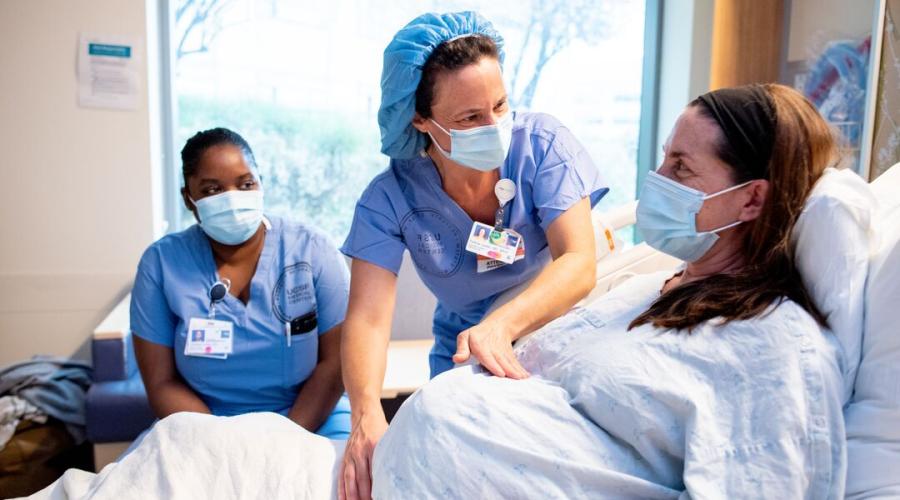
Improving Delayed Cord Clamping Rates for Preterm Infants at UCSF
Instead of immediately cutting a newborn's umbilical cord, more parents than ever are inquiring about delayed cord clamping (DCC) for their delivery.
However, reported rates of DCC vary significantly between institutions and are often low for preterm infants who are most likely to receive the benefits of prolonged placental blood supply offered by DCC.
By increasing the time between birth and clamping of the umbilical cord to 30 seconds or more, DCC allows more nutrient-rich blood to transfer to the newborn. The extra blood can help with the transition to life outside the womb, and DCC has been shown to decrease complications and improve early neurodevelopment for babies born prematurely.
A recent publication in Hospital Pediatrics describes how the UCSF Medical Center at Mission Bay increased DCC rates for preterm infants to over 65%, well above the statewide average of 29%, and suggests that other institutions could benefit from similar interventions.
The interdisciplinary project team consisted of experts in pregnancy and infant health, including UCSF physician Shannon Chan, MD, who led the project as a pediatric resident, and UCSF Assistant Professors of Pediatrics Marie-Coralie Cornet, MD, and Katelin Kramer, MD, from the Division of Neonatology.
Normalizing Delayed Cord Clamping
“To make a sustainable improvement, we sought to create a culture change to shift the perception of DCC from an optional intervention to the default with specific reasons for opting out,” says Chan.
To do so, the team led targeted education sessions and introduced “DCC education pearls” at team meetings to highlight DCC benefits, success stories and staff champions. Throughout the project, live tracking data confirmed the safety of increasing DCC rates.
Hospital protocols were updated to require an exclusion reason if not performing DCC and recommended an experienced neonatal provider, such as an attending physician or an experienced pediatric trainee, be at the bedside for preterm births.
Presence of a Pediatric Specialist
The decision on how long to delay clamping of the umbilical cord is made by the delivery team in real-time based on the health of the mother and child, which can be complex with preterm deliveries. Having a neonatal expert present during delivery allows them to actively communicate with the delivery team and assist with difficult DCC decisions, rather than waiting until the cord is cut to receive and care for the newborn.
“Before our project, DCC was often not performed due to concerns about the infant’s stability. Leveraging the expertise of a neonatologist comfortable with assessing a preterm infant and guiding any resuscitation gives the team an extra layer of support in moving forward with DCC,” says Chan.
Out of the 185 preterm births included in the study, 92% had a neonatal expert bedside. In total, over 80% of infants initially eligible benefitted from DCC.
“With our interdisciplinary team, we were able to get buy-in across the board on the importance of improving DCC rates to provide the best care for preterm infants. Now that we’ve sustained the improvement, our next step is to increase the DCC recommendation from 30 to 60 seconds and monitor for improved health outcomes,” says Chan.
